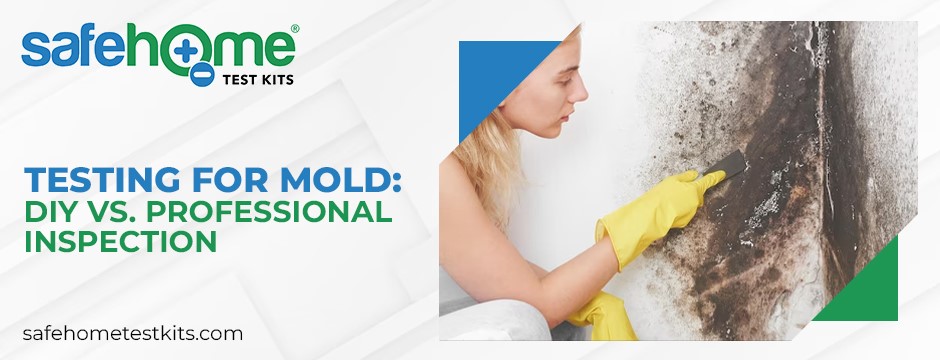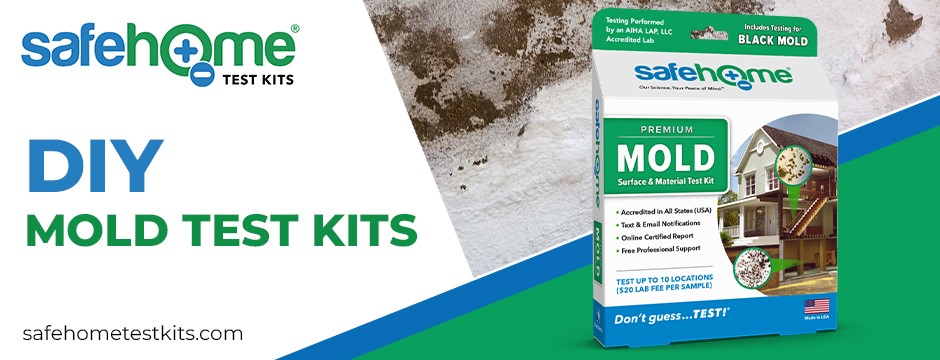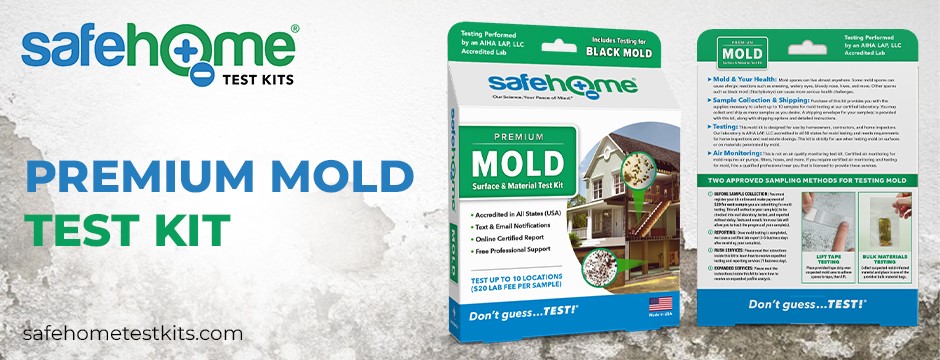Testing for Mold: DIY vs. Professional Inspection

Mold is a common household problem that can have serious implications for your health and the structural integrity of your home. Whether you’ve noticed musty odors visible mold growth, or are experiencing unexplained health issues, it’s essential to address mold promptly. Testing for mold is critical in identifying its presence and determining the appropriate remediation measures. This comprehensive guide will explore the pros and cons of DIY mold testing versus professional mold inspection to help you make an informed decision and ensure your home remains mold-free.
Understanding the Importance of Mold Testing
Mold is a type of fungus that thrives in damp and humid conditions. While some molds are harmless, others can produce mycotoxins that pose health risks to humans and pets. Common health issues associated with mold exposure include respiratory problems, allergies, skin irritation, and even more severe conditions in individuals with compromised immune systems.
In addition to health concerns, mold can damage your home’s structure and decrease its value. It can eat away at building materials like wood and drywall, leading to costly repairs. Given these potential risks, testing for mold is a crucial step in ensuring the safety and integrity of your home.
DIY Mold Testing: Pros and Cons
Pros of DIY Mold Testing
- Cost-Effective: DIY mold test kits are relatively inexpensive compared to professional inspections, making them an attractive option for budget-conscious homeowners.
- Convenience: DIY kits are available at many home improvement stores and online retailers. They provide a quick and convenient way to collect mold samples.
- Speed: DIY testing can provide results within a shorter timeframe, allowing you to act promptly if mold is detected.
Cons of DIY Mold Testing
- Limited Accuracy: DIY kits may need more precision and accuracy of professional inspections. They can yield false negatives or positives, leading to unreliable results.
- Limited Scope: DIY kits typically only test for mold in specific areas or surfaces, which may not comprehensively assess your home’s mold problem.
- Lack of Expertise: DIY testing relies on homeowners’ ability to collect samples and interpret results correctly. Without proper training and knowledge, mistakes can occur.
Professional Mold Inspection: Pros and Cons
Pros of Professional Mold Inspection
- Expertise: Certified mold inspectors have the training and experience to identify mold, assess its extent, and determine the best course of action.
- Comprehensive Assessment: Professionals use specialized equipment to inspect hidden areas, such as wall cavities and HVAC systems, providing a more thorough evaluation of mold issues.
- Accurate Results: Professional inspections are more likely to provide accurate results, reducing the risk of false positives or negatives.
- Customized Solutions: Professionals can recommend tailored remediation strategies based on the specific type and extent of mold found.
Cons of Professional Mold Inspection
- Cost: Professional mold inspections can be relatively expensive compared to DIY kits, potentially exceeding a homeowner’s budget.
- Time: Scheduling and completing a professional inspection may take longer than using a DIY kit, which can provide immediate results.

DIY Mold Testing: How It Works
DIY mold testing typically involves the following steps:
- Purchase a DIY Mold Test Kit: These kits usually include collection materials (swabs, tape, or air sampling cassettes) and detailed instructions.
- Collect Mold Samples: Follow the kit’s instructions to collect samples from suspected mold-prone areas, such as damp basements or areas with visible mold growth.
- Send Samples to a Lab: Most DIY kits require collecting samples in a laboratory for analysis. You may need to pay an additional fee for this service.
- Receive Results: Once the lab processes the samples, you’ll receive a report indicating the presence or absence of mold and, in some cases, the type of mold detected.
- Interpret Results: Review the results and follow any recommendations the report provides.
Professional Mold Inspection: How It Works
Professional mold inspections are typically more comprehensive and involve the following steps:
- Hire a Certified Mold Inspector: Research and hire a certified mold inspector with a good reputation and the necessary credentials.
- Initial Assessment: The inspector will conduct a thorough visual assessment of your home, looking for signs of mold and areas of concern.
- Air and Surface Sampling: Professionals may use specialized equipment to collect air and surface samples, allowing a more accurate assessment of mold levels.
- Laboratory Analysis: Samples are sent to a certified laboratory for analysis, providing precise information about the type and concentration of mold present.
Report and Recommendations: The inspector will provide you with a detailed report of their findings, including recommendations for remediation if necessary.
Making the Decision: DIY vs. Professional Mold Testing
The choice between DIY mold testing and professional mold inspection depends on various factors:
When to Choose DIY Mold Testing:
- Budget Constraints: If you have limited funds and suspect a minor mold issue in a specific area, a DIY kit may be a cost-effective initial step.
- Immediate Results: DIY testing may provide faster answers if you need quick results to determine whether mold is present.
- Maintenance Checks: DIY kits can be useful for periodic checks to ensure mold hasn’t returned after remediation.
When to Choose Professional Mold Inspection:
- Health Concerns: If you or your family members are experiencing health issues that could be mold-related, it’s advisable to consult a professional for a thorough assessment.
- Visible Mold Growth: If you can see mold growth in your home, especially in multiple areas or hidden spaces, professional inspection is crucial to determine the extent of the problem.
- Property Purchase: When buying a new home, a professional inspection can uncover hidden mold issues that may not be apparent during a visual inspection.
- Legal or Insurance Requirements: In some cases, insurance companies or legal proceedings may require a professional assessment.

Safe Home® Premium Mold Test Kit: Detect Mold with Confidence
When it comes to mold testing, accuracy and reliability are paramount. Safe Home® understands the importance of precise mold detection, so we offer the Safe Home® Premium Mold Test Kit. This comprehensive kit equips homeowners, contractors, and home inspectors with everything they need for sample collection, convenient shipping, and thorough testing conducted by our accredited laboratory. With Safe Home®, you can confidently identify and address mold issues to maintain a healthy living environment.
Comprehensive Testing for Peace of Mind
Our Premium Mold Test Kit is designed to provide comprehensive results you can trust. We understand mold testing is often crucial for home inspections, mortgage loans, and real estate closings. Our laboratory holds AIHA LAP, LLC accreditation in all 50 states for mold testing. This accreditation demonstrates our commitment to meeting rigorous requirements and industry standards, ensuring our results are reliable and accepted in various professional and legal contexts.
Easy-to-Use Kit for Everyone
Whether you’re a homeowner concerned about the air quality in your residence, a contractor inspecting a potential property, or a home inspector evaluating a house for sale, our Premium Mold Test Kit is designed to meet your needs. We’ve streamlined the testing process to make it as user-friendly as possible. You can use our kit effectively without being a mold expert.
Confidence in Your Results
With Safe Home®, you can have confidence in the results of your mold test. We prioritize accuracy and reliability, ensuring you receive precise information about mold presence and type. Armed with this knowledge, you can take the necessary steps to address mold issues promptly and effectively, safeguarding the health and well-being of your family and the structural integrity of your home.
Conclusion
Testing for mold is essential in maintaining a safe and healthy home environment. While DIY mold testing kits offer a cost-effective and convenient option, they may need more precision and accuracy of professional mold inspections. Professional inspectors bring expertise, specialized equipment, and the ability to assess hidden areas, providing a comprehensive evaluation of mold problems. Ultimately, the choice between DIY and professional mold testing depends on your specific circumstances, budget, and the level of certainty you require. Regardless of the method chosen, timely mold testing and remediation are essential for safeguarding your health and the structural integrity of your home. Take your time; address mold issues promptly to ensure a mold-free living space for you and your loved ones.


